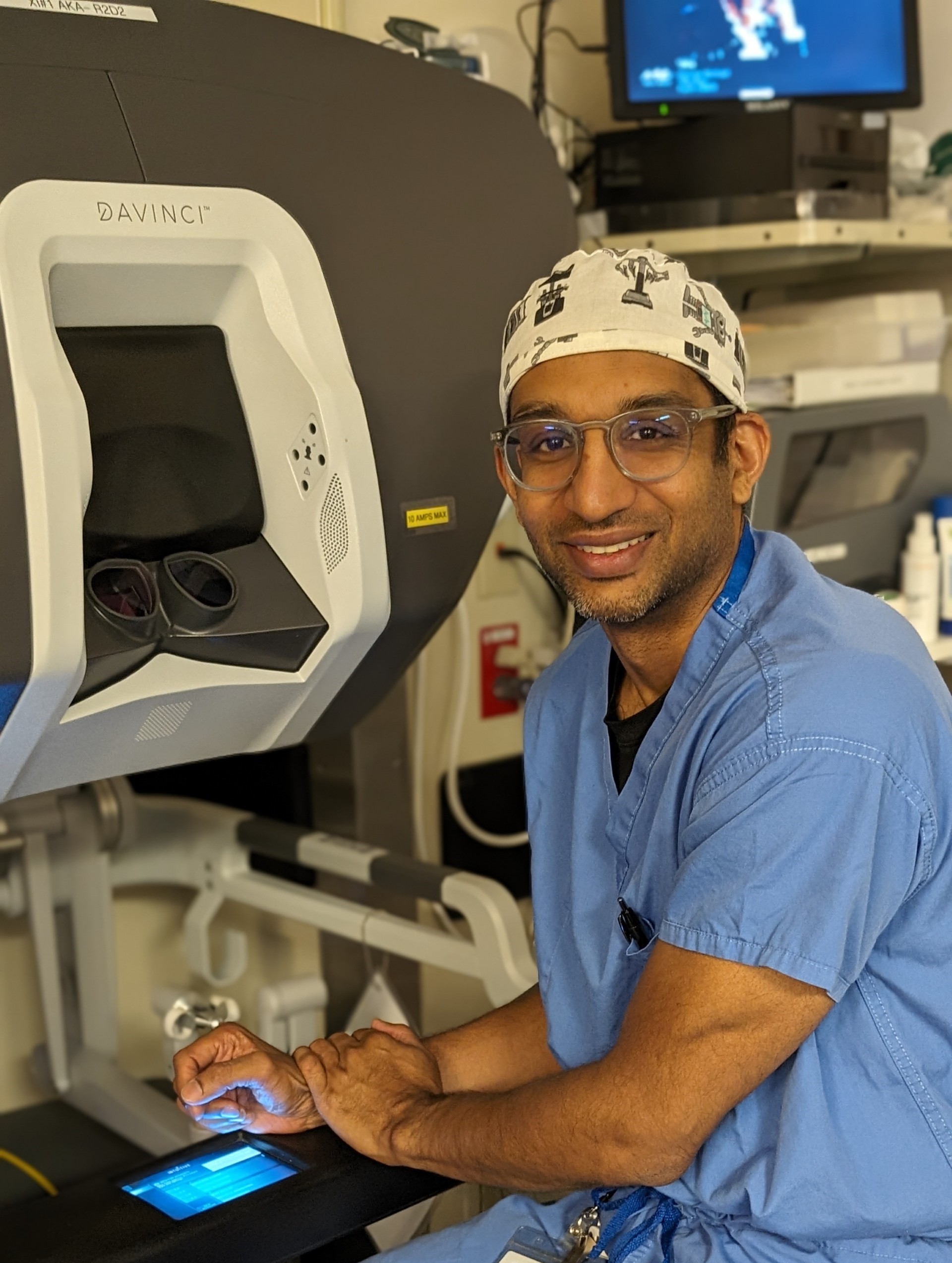Treating Bladder Cancer Using Surgical Robot
June 26, 2024

Abhay Singh, MD, St. Luke’s urologist, says robotic surgery for bladder cancer enhances surgical precision and patient convenience.
St. Luke’s University Health Network urologists are using robot-assisted technology to surgically remove bladder cancer with promising results. Called partial (or radical) cystectomy, this treatment method is better for patients, as it reduces blood loss, improves patient comfort and promotes faster recovery and discharge from the hospital.
During this procedure, the surgeon makes small incisions in the patient’s abdomen, then inserts a miniature 3D camera, cutting devices and grasping tools.
St. Luke’s urologist Abhay Singh, MD, calls the benefits of robotic surgery for bladder cancer “significant,” adding, “this is evolving to become the standard of care preferred by patients and urologists.”
“Cancerous bladder removal, and subsequent reconstruction, is complex and effective, but the da Vinci XI robot at St. Luke’s enhances surgical precision and patient convenience and produces outcomes that aren’t always achievable with ‘open’ operations.”
About 80,000 persons in United States are diagnosed yearly with bladder cancer, a disease closely linked to tobacco smoking and exposure to certain chemicals. The most common symptom of bladder cancer is blood in the urine. With age comes the increased of bladder cancer, especially in persons ages 60-80 years.
There are generally two kinds of bladder cancer. Less invasive cancers are usually not life threatening, while cancers that invade the muscle can be a threat. Most bladder cancers do not infiltrate the organ’s muscle layer. Treatment for more aggressive cancers usually involves surgical removal of the bladder along with chemotherapy. Some patients opt for radiation and chemotherapy instead.
The surgery might include removal of the bladder, prostate (in men) and lymph nodes in the pelvis. Construction of a replacement bladder, or passage for urine out of the body to a urine-collection bag, then is performed during the same surgery using a section of the patient’s intestine, explained Dr. Singh.
He estimates that he will choose robot-assisted technology to treat approximately a dozen bladder cancer patients this year, a volume that will increase annually. Patients who are obese, or have significant scar tissue growth in the abdomen from a prior surgery, may not qualify for this kind of small-incision surgery.
“Patients respond well to this new treatment option … and most can return to their daily activities with no limitations,” added Dr. Singh.
Read More NewsLatest News


April 10, 2025
National Recognition for SLUHN Graduate Medical Education

April 09, 2025
In Safe Hands Award

April 08, 2025